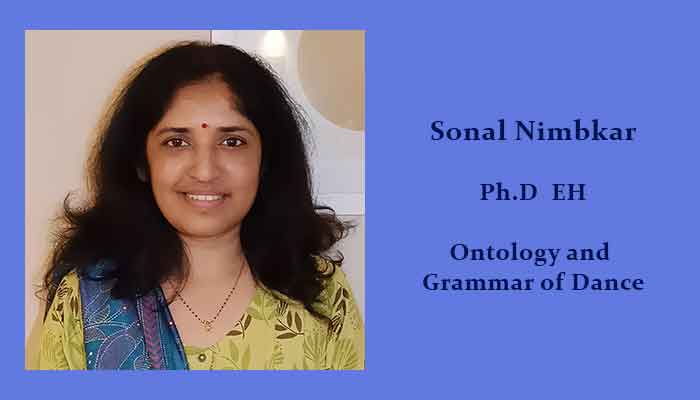October 2022
Sonal Nimbkar received her doctorate in Exact Humanities (EH). Her research work was supervised by Prof. Dipti M Sharma. Here’s a summary of her research work Ontology and Grammar of Dance:
Dance movement is not just an external body movement but internal too. It is both a physical and mental phenomena. As per Vaiśeṣika theory both these phenomena are different in nature. Mental phenomena, like thoughts, are sequential in nature, as it is in pure time. Physical phenomena, like body movement, are in time as well as space. If thoughts are to be put in front of the world, then they need body which utilizes space. How does the thought that is in mind finds expression in space using body? The link between the two, mind and body, is manas. Manas connects mental and physical phenomena. It helps us to understand the internal body which plays a major role in dance. It is through body that a dancer dances. Manas resides and moves in the internal body. Hence tracing the movement of manas is essential for the construction of accurate grammar of dance. We take a model of human as per Vaiśeṣika theory to interpret dance movement. According to this theory human being is made up of three basic elements, ātman (self), manas (mind) and śarīra (body). Ātman with the help of manas makes an effort (prayatna, ceṣṭā) on the muscles and joints of body to create dance. Manas is the link between ātman and śarīra. When we do a simple movement, manas goes to millions of places in the body. Even if we take the aggregate gross movements of the manas moving in the body, we can model dance movement. These aggregate motion of mind is manifested as the movement words. A movement is constructed with these movement words. Thus, understanding the movement of manas will help us to understand and derive the grammar of movement. We plan to specify syntax of movement, which integrates physical as well as mental aspect of movement.

